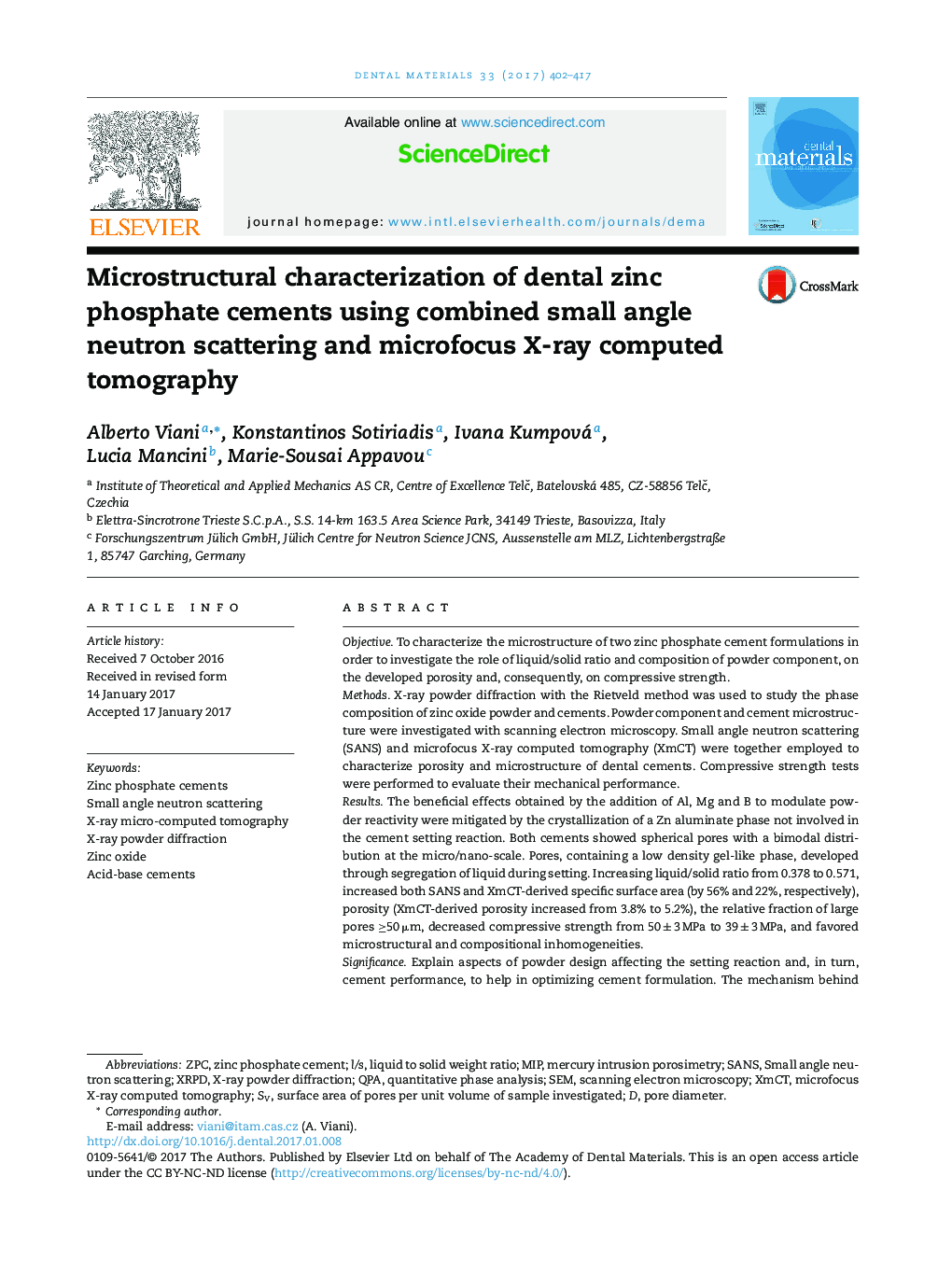| کد مقاله | کد نشریه | سال انتشار | مقاله انگلیسی | نسخه تمام متن |
|---|---|---|---|---|
| 5432896 | 1398046 | 2017 | 16 صفحه PDF | دانلود رایگان |
- Aspects of powder design affecting reactivity and cement composition are discussed.
- Two formulations of commercial cement showed bimodal distribution of micro-pores.
- X-ray computed tomography revealed that a gel-like phase precipitates in the pores.
- Porosity develops by liquid segregation and not by air-entrapment during mixing.
- Strength is higher for the cement obtained with less liquid used as filling material.
ObjectiveTo characterize the microstructure of two zinc phosphate cement formulations in order to investigate the role of liquid/solid ratio and composition of powder component, on the developed porosity and, consequently, on compressive strength.MethodsX-ray powder diffraction with the Rietveld method was used to study the phase composition of zinc oxide powder and cements. Powder component and cement microstructure were investigated with scanning electron microscopy. Small angle neutron scattering (SANS) and microfocus X-ray computed tomography (XmCT) were together employed to characterize porosity and microstructure of dental cements. Compressive strength tests were performed to evaluate their mechanical performance.ResultsThe beneficial effects obtained by the addition of Al, Mg and B to modulate powder reactivity were mitigated by the crystallization of a Zn aluminate phase not involved in the cement setting reaction. Both cements showed spherical pores with a bimodal distribution at the micro/nano-scale. Pores, containing a low density gel-like phase, developed through segregation of liquid during setting. Increasing liquid/solid ratio from 0.378 to 0.571, increased both SANS and XmCT-derived specific surface area (by 56% and 22%, respectively), porosity (XmCT-derived porosity increased from 3.8% to 5.2%), the relative fraction of large pores â¥50 μm, decreased compressive strength from 50 ± 3 MPa to 39 ± 3 MPa, and favored microstructural and compositional inhomogeneities.SignificanceExplain aspects of powder design affecting the setting reaction and, in turn, cement performance, to help in optimizing cement formulation. The mechanism behind development of porosity and specific surface area explains mechanical performance, and processes such as erosion and fluoride release/uptake.
263
Journal: Dental Materials - Volume 33, Issue 4, April 2017, Pages 402-417
